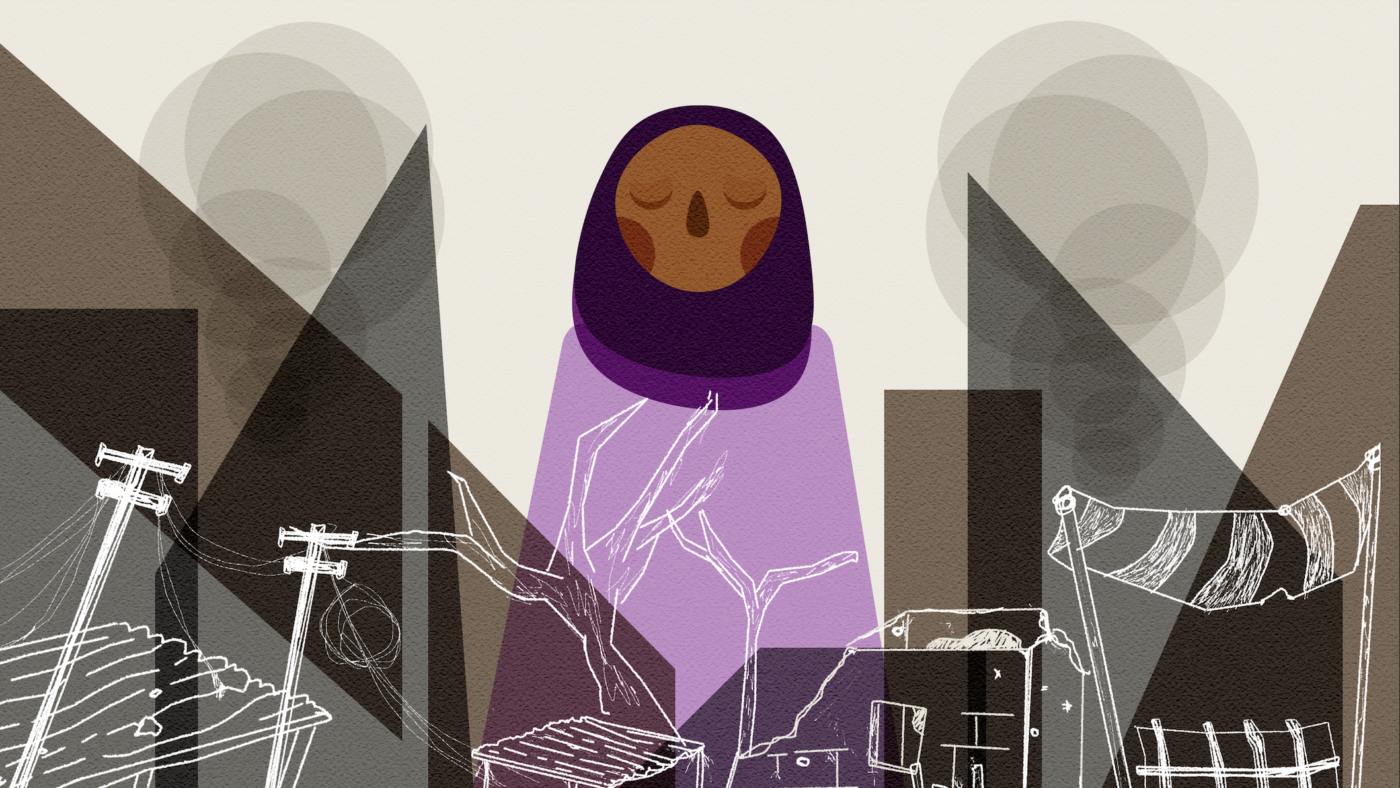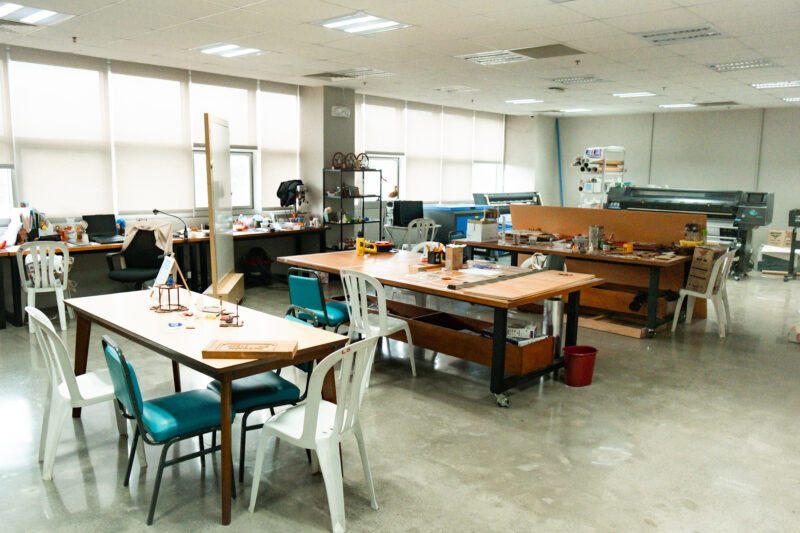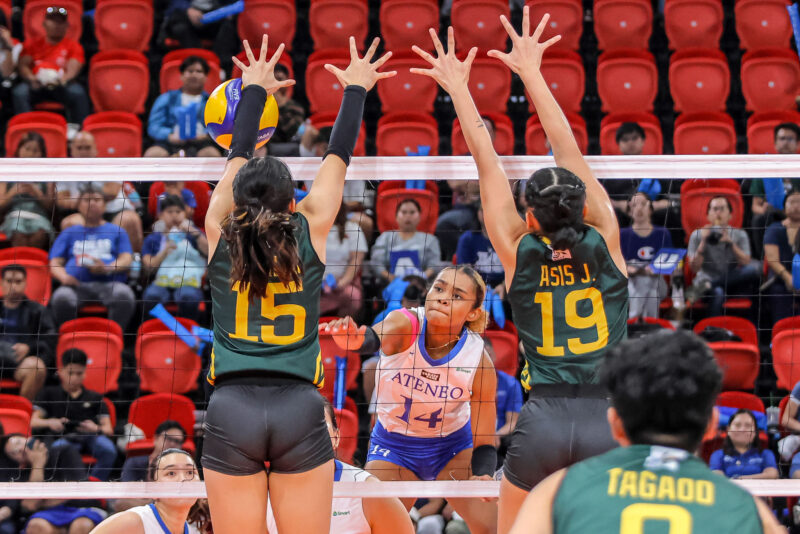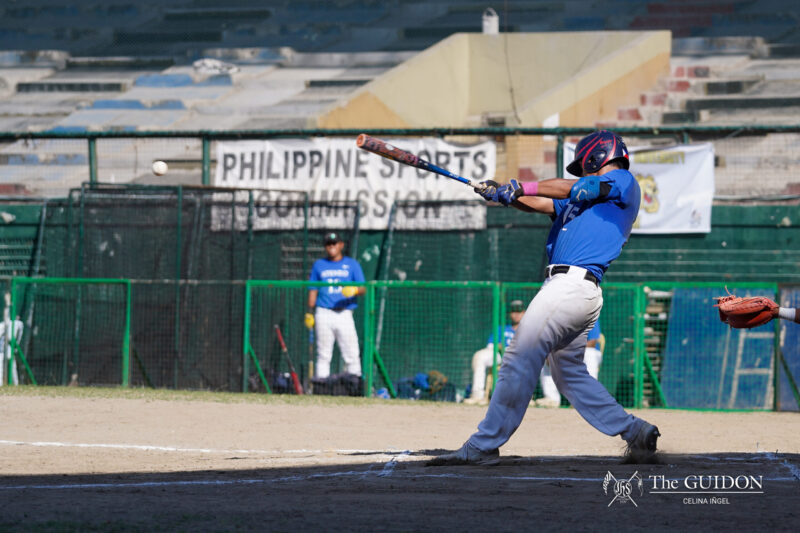Dek: For women of minority groups in Mindanao, struggle is an integral part of their identity—but so are their dreams for emancipation.
THE DAMAGE done by war may already be known to many, but the inclusion of female identities in post-conflict restoration is an issue that continues to be out of earshot. For minority women in Zamboanga City, layers of intersecting inequality tangle with their personal ambition.
As historically marginalized peoples, ethnolinguistic groups in Mindanao grapple with armed resistance, poverty, and displacement—on top of facing harmful stereotypes that fail to humanize their lived experiences. Struggle is thus woven into the fabric of their identities. Because—and in spite—of this, one Zamboangueña remains hopeful in her own pursuit of peace and liberation from all forms of injustice.
Back to (ground) zero
Amina Shayne Halil dreams of becoming a doctor to the barrios in the far-flung, underserved areas of Zamboanga City. The 23-year-old student is currently taking up a degree in Doctoral of Medicine – Master in Public Health at the Ateneo de Zamboanga University.
When she was 14 years old, Halil was going about her routine as a Grade 8 student. As usual, she woke up at 5:00 AM and prepared to leave at 6:30 AM for the flag ceremony. On a normal day, she would stay at school until 6:00 PM or 7:00 PM. However, September 9, 2013 was a day out of the ordinary. Everywhere, media channels reported that a siege broke out, affecting coastal barangays within the immediate vicinity of the Pueblo—the downtown center.
At first, Halil took the class suspension as an opportunity to rest, thinking the commotion was a “peaceful protest.” However, she realized the gravity of the events when she heard that the Moro National Liberation Front (MNLF) fighters had already seized human hostages. The MNLF acted upon their claims that the national government failed to fulfill the provisions of the Final Peace Agreement with the MNLF, dated September 2, 1996 during the administration of former President Fidel Ramos.
For security purposes, borders and businesses closed down, from the Aeropuerto Internacional de Zamboanga to the humble sari-sari stores. Halil and her family’s first challenge was to “think rationally” amid the stress. No one knew which barangays were the next target of conflict, and fake news from unverified sources worsened the situation.
At the time, Halil and her family resided in Baliwasan, a seaside barangay approximately 3.5 kilometers away from the city hall where the MNLF hoisted their flag. In their attempt to seek refuge, Halil and her family had to transfer twice with the help of relatives who had an extra vehicle. Struggling to acquire basic necessities, Halil and her family reached out to support systems for extra food supplied. Halil even witnessed Zamboangueños panic buy when stores opened for a brief period.
Apart from the disruption to their daily lives, the crisis that is now referred to as the “2013 Zamboanga Siege” has exacerbated anti-Mindanao rhetoric over the years. This has included hasty generalizations of insecurity, which may further existing prejudice against Moro communities. “There was a lot of discrimination [against] Muslim women, I mean Muslim people in general, because people were scared for their lives,” Halil shares. She adds that although these reservations come from somewhere, they may cloud non-Mindanaoan’s perception of Mindanaoans.
Almost a decade since the siege, Halil confesses that she had thought of leaving Zamboanga and Mindanao. However, her views eventually changed as a result of peace-building partnerships from the people and the local government. Gradually, she realized that she had stories to tell. Now, Halil’s motivations for studying medicine are rooted in her community’s contexts, particularly the lack of accessibility to basic healthcare and education.
Layered realities
Halil’s personal troubles are rooted in larger issues concerning gender, civil unrest, and Islamophobia—as well as their nuanced interactions. According to Ma. Lourdes V. Rallonza, PhD—an associate professor at the Ateneo de Manila University specializing in international relations, gender, transitional justice, and women, peace, and security—“A woman has a lot of intersectionalities, but conflict is a different nature.”
As such, gender continues to color Mindanaoans’ lived experiences of conflict. If not the most, Women are one of the most vulnerable sectors in conflict zones since they are the fundamental victims of sex- and gender-based violence. Following the siege, Rallonza cited an increase in teenage pregnancy, sexually-transmitted diseases, and prostitution among women in the cramped makeshift evacuation tents at the Joaquin F. Enriquez Memorial Sports Complex in Zamboanga City.
Moreover, women are the cornerstone of conflict-stricken societies. As the one in charge of the household matters, women are also burdened with the responsibility to lead the post-conflict reconstruction. Rallonza says that whenever there is a call to evacuate, women usually pick up the kids and kitchenware.
During the 2013 Zamboanga siege, Rallonza also discovered that Muslim women had to remove their hijab in front of the Armed Forces of the Philippines to avoid suspicion. However, they had to put it back on if they encountered MNLF fighters. Halil in particular has had her own experiences of being ostracized for wearing a hijab, as inspection procedures in establishments were tightened for veiled and covered women. At large, Muslim women are often subjected to stricter baggage search or even barred from entrances.
Drawing from other aspects of her identity, Halil also faced misconceptions about Mindanao such as the idea that Mindanao is prone to violence. For her, people would not fully understand who Mindanaoans are without experiencing Mindanao.
Paz y desarollo (Peace and development)
For families and groups that have been relocated, the battle continues to this very day. Relocation to an area they find too difficult to call home not only undermines their living conditions but, more importantly, their culture and customs as well. The relocation process has also made it difficult for family members to work in the city where they have been previously employed. These are just some of the problems that continue as consequences of the siege, actively proving how their past still hinders their efforts in moving forward.
To this day, Halil hopes for a Zamboanga that holds no trace of inferiority or superiority among and within religious groups. She desires a hometown that opens itself up to diversity and celebrates it so that people from all walks of life can coexist harmoniously.
Ultimately, what women in conflict areas like Halil want is to be included in discussions regarding the direction of their future. Women must be present in plans for post-conflict construction and have access to livelihood programs that promote economic security.
“[The] way to go about peace is to include people, particularly women, resolution of the conflict to be mutually agreed to,” Rallonza expresses, adding that these efforts have to be maintained for future generations.
Dreams for peace are not granted overnight. While Mindanao’s contexts are not without struggle, Halil asserts that it should not be the region’s defining legacy. The development of Zamboanga and other conflict areas in Mindanao can be realized when everyone is offered a seat at the table: a seat that guarantees equal opportunities for their voices and stories to be considered in weaving their collective future.
Editor’s Note: The insights and statements of the interviewee do not represent the entire population of Zamboanga or Zamboanga City.







